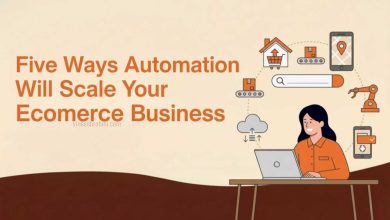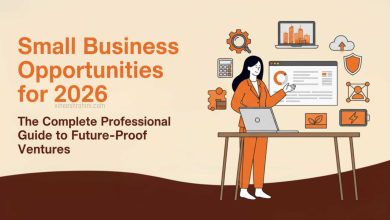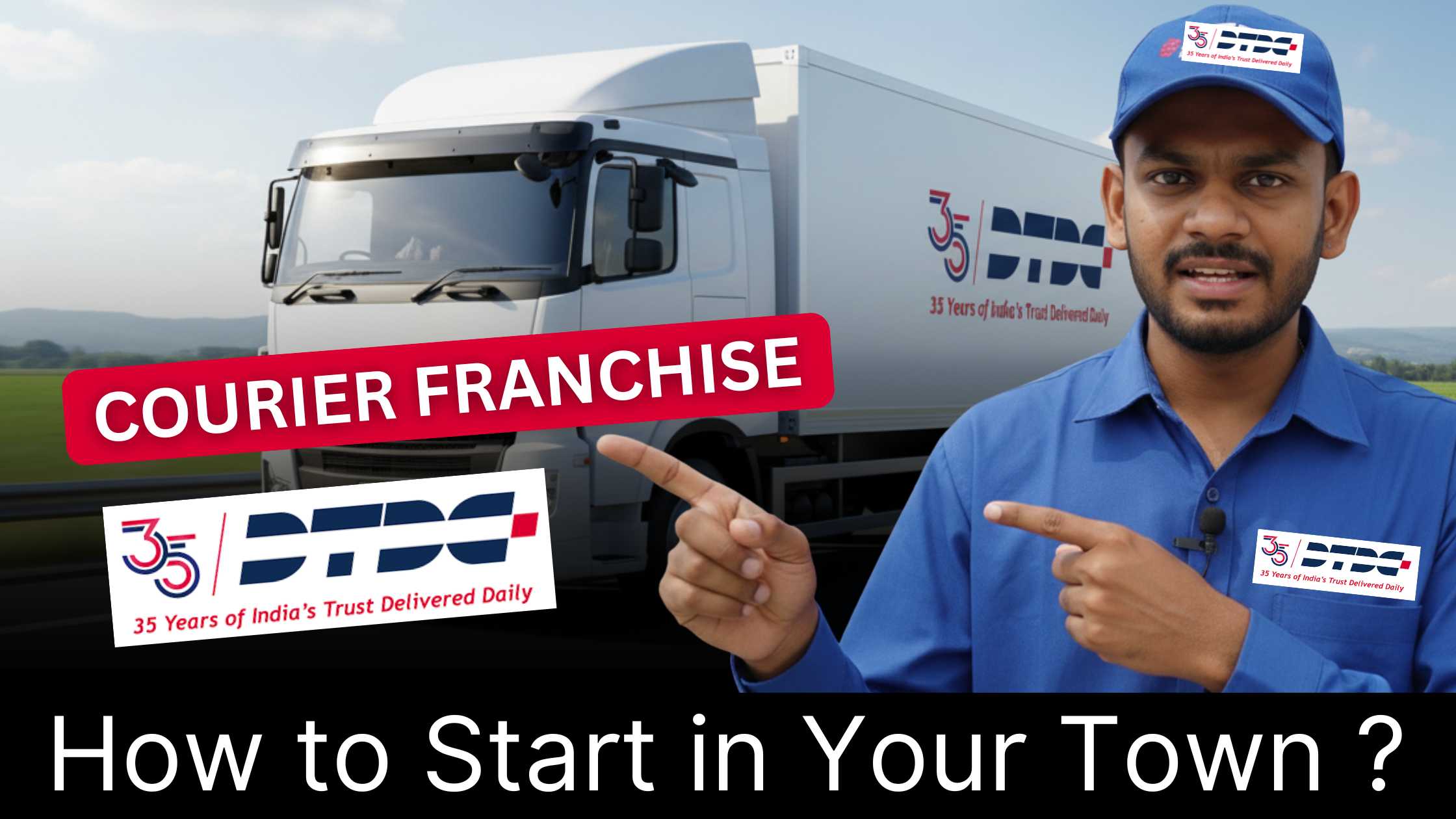How to Start an Amazon FBA Business from Scratch – Complete Guide 2025
Amazon FBA Business : The landscape of online business has changed dramatically in the last decade. Entrepreneurs no longer need a physical store, large staff, or complex supply chain to reach customers worldwide. Instead, platforms like Amazon FBA (Fulfillment by Amazon) empower individuals with an opportunity to sell products online with ease, using Amazon’s logistics and customer trust. Many people now ask: Can I really start an Amazon FBA business from scratch? The answer is yes. With the right strategy, anyone can enter the world of e-commerce and build a sustainable, scalable business.
Table of Contents
This Comprehensive guide explains everything you need to know—from what Amazon FBA is, why it’s profitable, the steps to launch, investments required, challenges, and how to scale into a long-term brand.
Understanding Amazon FBA

Amazon FBA, short for Fulfillment by Amazon, is a service where sellers store their products in Amazon’s warehouses. When a customer places an order, Amazon takes care of picking, packing, shipping, customer service, and returns. Sellers simply list their products, send inventory to Amazon, and focus on marketing and sales.
This model works because it removes the operational headaches of logistics, allowing sellers—even beginners—to compete with global brands. Products listed through FBA also qualify for Amazon Prime, making them more attractive to buyers who prefer fast and free shipping.
Why Amazon FBA Is Attractive for Entrepreneurs
Before jumping into how to start, it’s important to understand why Amazon FBA is one of the most profitable e-commerce business models in 2025.
- Huge Customer Base – Amazon attracts millions of daily visitors. Sellers instantly tap into this demand.
- Trust Factor – Customers trust Amazon for secure payments and reliable delivery. This trust extends to FBA sellers.
- Automation of Logistics – Packing, shipping, and returns are managed by Amazon, saving time and reducing errors.
- Prime Eligibility – Products fulfilled by Amazon are part of Prime, boosting sales potential.
- Scalability – Once set up, sellers can expand into new categories and international markets without worrying about warehouse infrastructure.
- Customer Service Outsourcing – Amazon handles buyer queries and complaints, reducing seller workload.
For individuals in India and across the world, FBA provides the chance to start small, test the market, and grow into a large-scale business.
Step-by-Step Guide to Starting an Amazon FBA Business from Scratch

Starting an Amazon FBA business might sound overwhelming, but if you break it down into systematic steps, it becomes much more manageable.
Step 1: Market Research and Niche Selection
The foundation of any successful Amazon FBA business is choosing the right niche and product. Selling a poor product in a saturated category often leads to losses. To identify profitable opportunities:
- Look for demand: Use tools like Helium 10, Jungle Scout, or Keepa to track product sales volume.
- Avoid over-saturated products: Highly competitive categories like phone accessories may be difficult for beginners.
- Check profit margins: Ensure the product allows at least 25–35% profit after costs.
- Consider lightweight items: Lower shipping and storage fees mean higher profitability.
- Think evergreen, not seasonal: Products that sell year-round, like kitchen tools, often provide stability.
Example: Instead of selling generic yoga mats, niche down into eco-friendly cork yoga mats with unique branding.
Step 2: Finding and Sourcing Products
Once you’ve identified a niche, you need suppliers. Common sourcing methods include:
- Alibaba / Global Sources: International manufacturers, usually from China, who can provide bulk orders.
- Local Suppliers / Indian Manufacturers: Faster shipping and better control over quality.
- Private Labeling: Ordering generic items and branding them under your own label, creating uniqueness.
- Dropshipping to FBA Prep Centers: Useful for sellers testing new markets.
Tips for sourcing:
- Always order product samples before bulk purchases.
- Negotiate prices based on minimum order quantities.
- Calculate the landed cost (manufacturing + shipping + customs + Amazon fees).
Also Read : 10 Low-Cost Online Business Ideas for 2025 – Launch Your Digital Venture with Minimal
Step 3: Creating a Business Plan
A solid business plan ensures you know your financial requirements and growth path. It should cover:
- Investment Breakdown (product sourcing, shipping, storage, marketing).
- Pricing Strategy (competitive yet profitable).
- Marketing Plan (PPC ads, social media).
- ROI Timeline (when to expect breakeven).
- Scaling Opportunities (adding more products, expanding to other countries).
Having a clear roadmap prevents overspending and ensures steady progress.
Step 4: Setting Up Amazon Seller Account
You need an Amazon Seller Central account to list products. Amazon offers two plans:
- Individual Plan – Best for beginners testing the waters, charges per item sold.
- Professional Plan – Monthly subscription with advanced features like bulk uploads and analytics.
During registration, you’ll need:
- PAN card / GST number (for India).
- Bank account details.
- Valid ID proof.
Step 5: Understanding Amazon FBA Fees
Your profits depend heavily on fee calculations. Main charges include:
- Fulfillment Fees: Cost per unit for packing and delivery.
- Storage Fees: Monthly storage cost for inventory in warehouses.
- Referral Fees: Amazon’s commission (percentage of sales price).
- Optional Charges: Advertising, labeling, long-term storage fees.
Pro Tip: Use Amazon’s FBA Calculator to check profitability before finalizing a product.
Step 6: Shipping Inventory to Amazon
Once products are ready, ship them to Amazon’s fulfillment centers. Options include:
- Direct Supplier to Amazon: Ideal for large volumes.
- Self-Delivery to FBA Warehouses: For small businesses managing logistics initially.
Make sure packaging and barcoding comply with Amazon’s rules. Each product needs an FNSKU barcode for identification.
Step 7: Creating and Optimizing Listings
Your product listing is like your storefront—it must attract buyers. Key elements:
- Title: Include main keywords and brand name.
- Bullet Points: Highlight features, benefits, and unique selling points.
- Product Description: Provide detailed information in easy-to-read format.
- Images: Use high-resolution photos from multiple angles, lifestyle shots, and infographics.
- Backend Keywords: Hidden keywords that improve SEO ranking.
Optimization is crucial because millions of products compete on Amazon.
Step 8: Launch and Promote Your Product
Getting visibility is vital during launch. Proven strategies include:
- Amazon PPC Ads: Pay-per-click ads increase initial visibility.
- Discount Coupons & Deals: Attract first-time buyers.
- Social Media Promotions: Run campaigns on Insta, YT, and FB.
- Influencer Marketing: Partner with content creators in your niche.
- External Traffic: Drive traffic from your own website or blogs.
Example: A seller launching a new kitchen knife set could collaborate with food bloggers for reviews.
Step 9: Collect Reviews and Build Trust
Reviews significantly influence Amazon buyers. Encourage customers to leave feedback by:
- Using Amazon’s “Request a Review” button.
- Providing excellent customer service.
- Adding inserts inside packages thanking customers and reminding them to review.
Avoid manipulative practices like fake reviews, as Amazon enforces strict penalties.
Step 10: Scaling Your Business
Once you’ve validated your product, scaling is the next step. Options include:
- Expanding your product line within the same niche.
- Entering new international Amazon marketplaces (UK, UAE, US).
- Building a private label brand with your logo, packaging, and brand identity.
- Creating your own e-commerce website for independence.
Smart reinvestment of profits accelerates long-term growth.
Investment and Profit Expectations

The initial investment for an Amazon FBA business varies depending on your product category. On average:
- Product Sourcing: ₹80,000 – ₹2,00,000
- Amazon Fees: ₹3,000 – ₹5,000/month
- Shipping & Customs: ₹30,000 – ₹80,000
- Marketing (PPC Ads): ₹20,000 – ₹60,000
In total, a beginner may need around ₹1.5 – ₹3.5 lakh to start.
Buy Now : Launch Your Online Clothing Business : From Start to Success
Profit margins typically range between 20%–35%, with some sellers crossing higher percentages through branding. For instance, a seller investing ₹2 lakh in eco-friendly bottles could achieve ₹50,000–₹80,000 monthly profit after 6–12 months, depending on demand and marketing execution.
Common Challenges and How to Overcome Them
- High Competition: Focus on unique branding and niche products.
- Inventory Risks: Track demand to avoid overstocking or running out of stock.
- Amazon Policy Changes: Stay updated with Amazon’s seller guidelines.
- Upfront Costs: Start small and scale gradually.
- Dependence on Amazon: Diversify by creating your own website or selling on other marketplaces.
Real-Life Example: A Beginner’s Journey
Consider an Indian entrepreneur who started selling eco-friendly bamboo toothbrushes. Initially, they invested ₹1.8 lakh, sourced products from a local manufacturer, and listed them via FBA. By optimizing listings with “eco-friendly oral care” keywords and running small PPC ads, they generated consistent sales. Within 8 months, they scaled to ₹5 lakh in monthly revenue by adding more sustainable oral care products. This case highlights how niche selection and branding make all the difference.
Long-Term Strategies for Success
- Invest in Branding: Create logos, custom packaging, and a strong brand story.
- Focus on Customer Retention: Encourage repeat purchases through discounts and loyalty programs.
- Leverage Data: Use analytics tools to refine product selection and pricing.
- Expand Marketing Channels: Explore influencer campaigns, email marketing, and social commerce.
- Think Globally: Amazon FBA offers opportunities in international markets, giving you global visibility.
Why Amazon FBA Will Continue to Grow
With e-commerce sales rising year after year, Amazon’s ecosystem keeps expanding. Features like Amazon Global Selling, AI-driven recommendations, and same-day delivery make it the future of online retail. Sellers who start now position themselves to ride the wave of global e-commerce growth.
Conclusion

Starting an Amazon FBA business from scratch in 2025 is a realistic and profitable venture for aspiring entrepreneurs. While it requires research, investment, and consistent effort, the rewards can be substantial. From niche selection to scaling a global brand, FBA provides the infrastructure and exposure needed to succeed in the digital economy.
Buy Now : Launch Your Online Clothing Business : From Start to Success
If you want to build a side income or a full-fledged brand, Amazon FBA is one of the best business models available today. By following the right steps—researching products, sourcing smartly, optimizing listings, and scaling strategically—you can transform an idea into a thriving e-commerce empire.
Disclaimer: This blog is for informational purposes only. Earnings, costs, and outcomes may vary based on individual effort, product choice, and market conditions. Conduct your own research before investing in an Amazon FBA business.
Keywords : Amazon FBA Business – Amazon FBA Business in 2025



